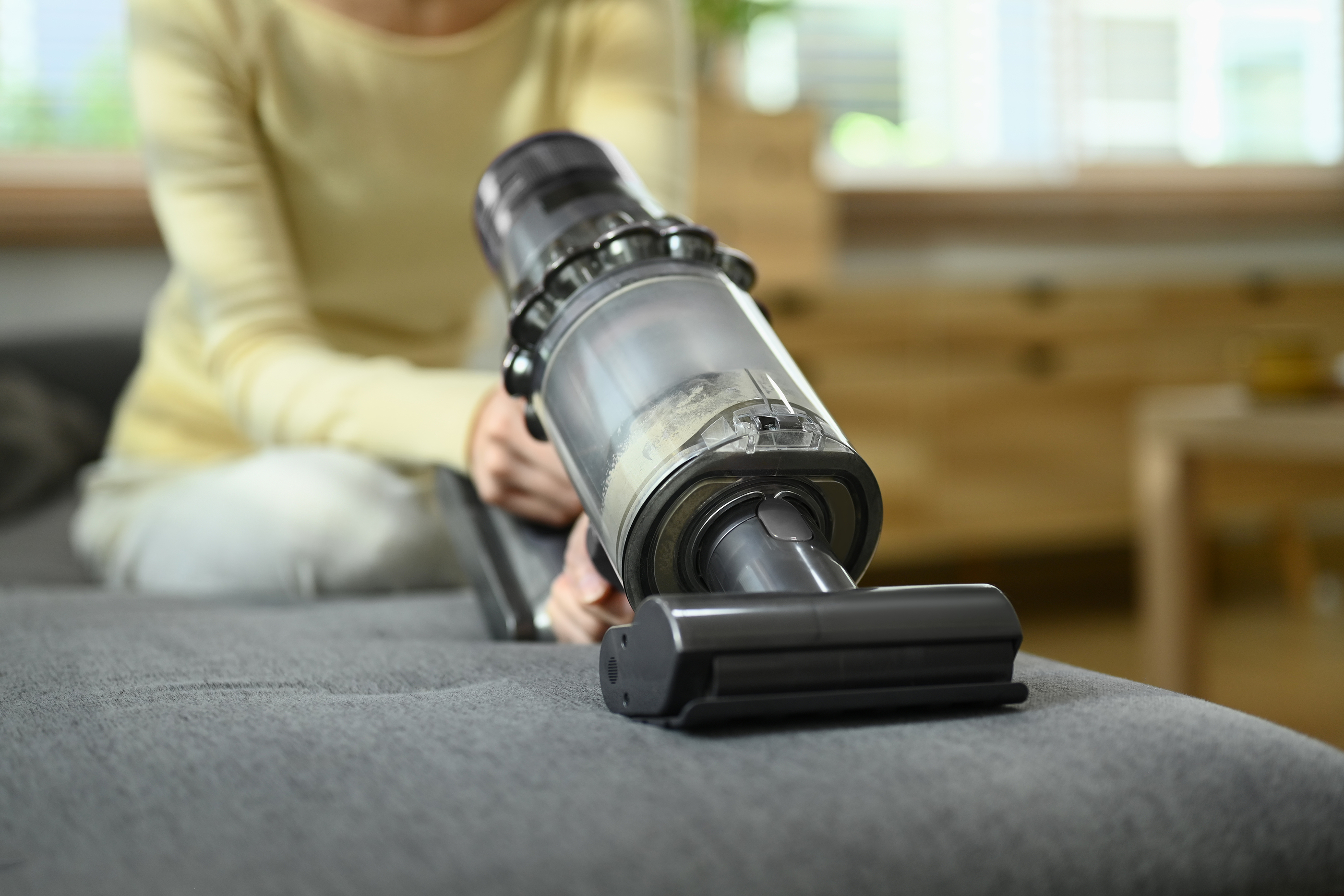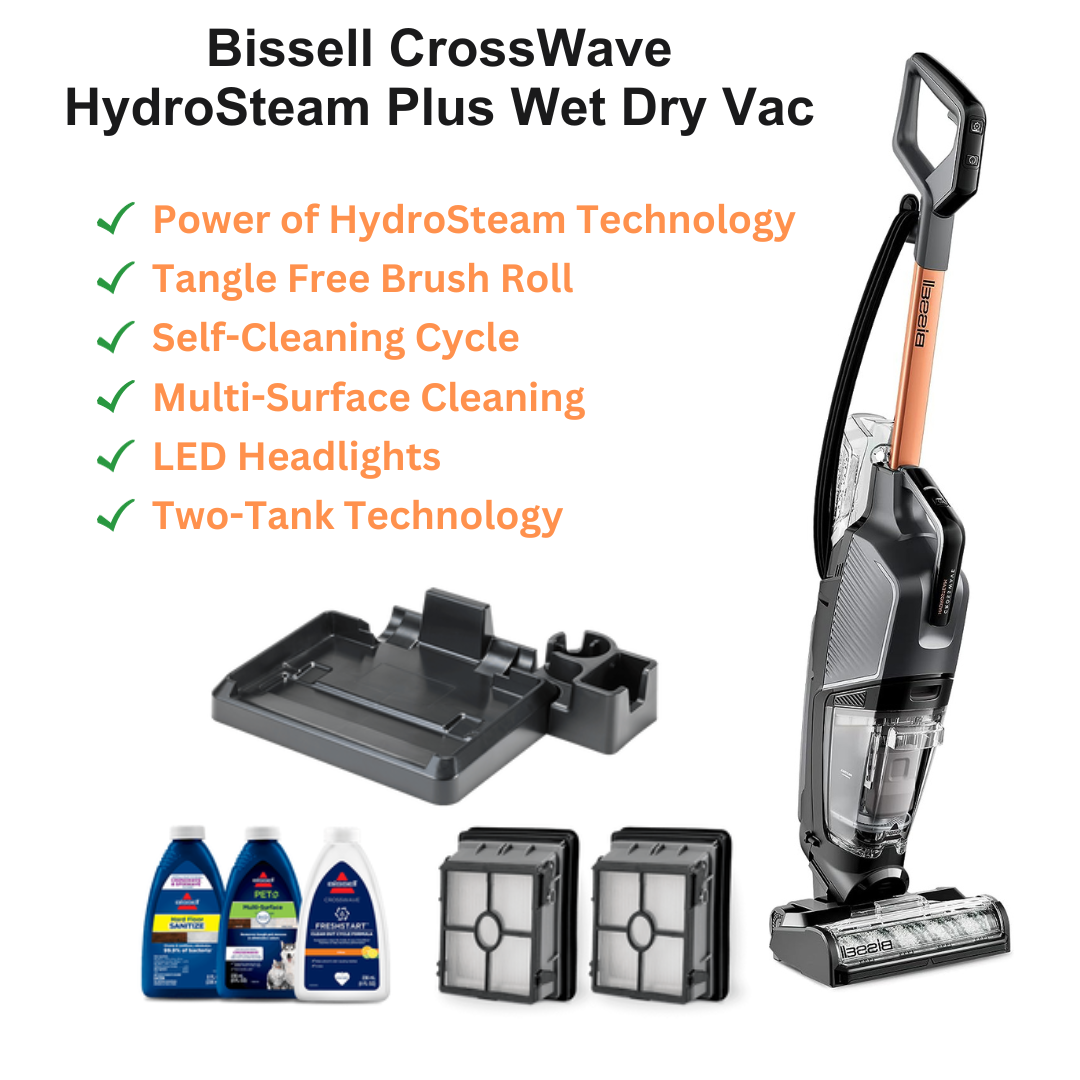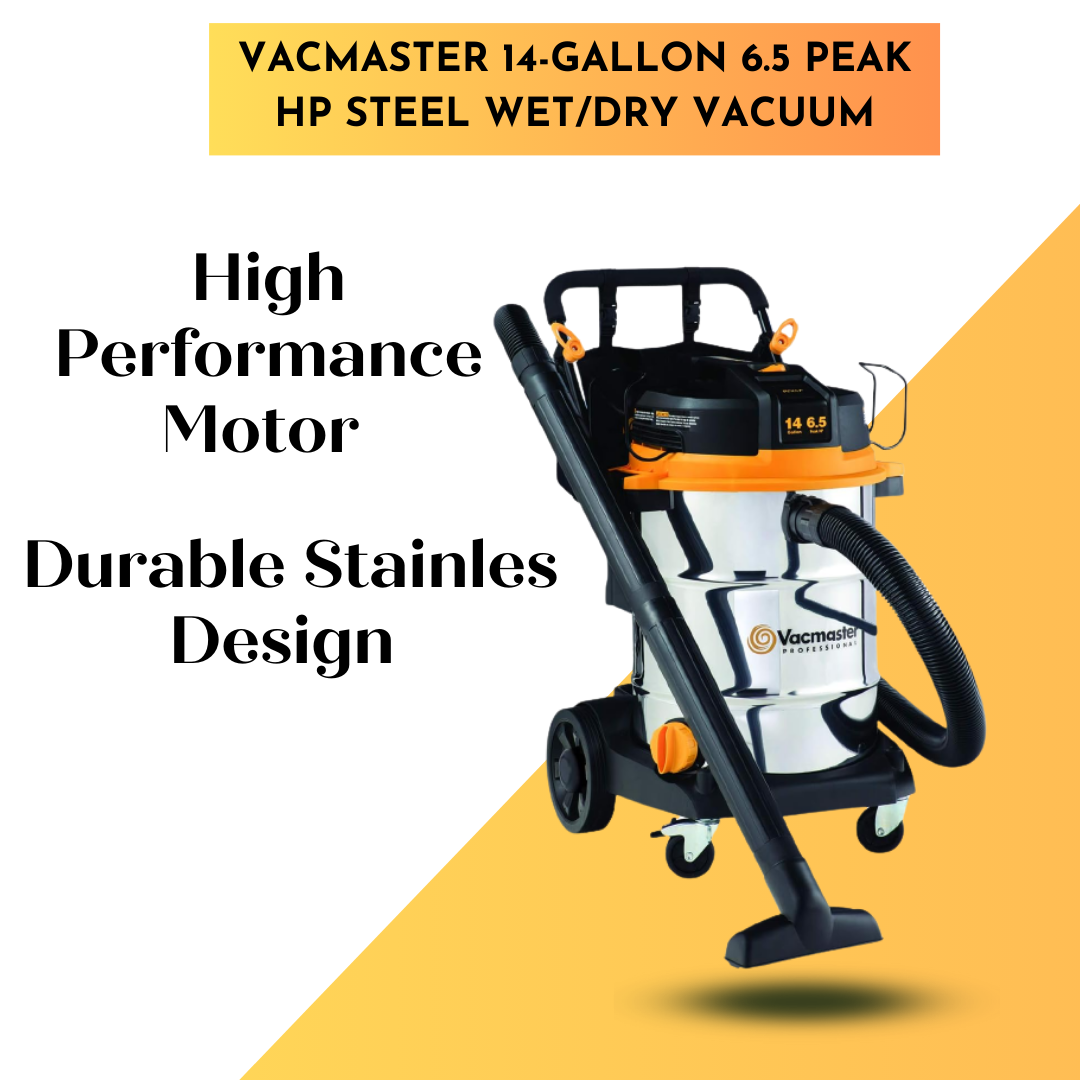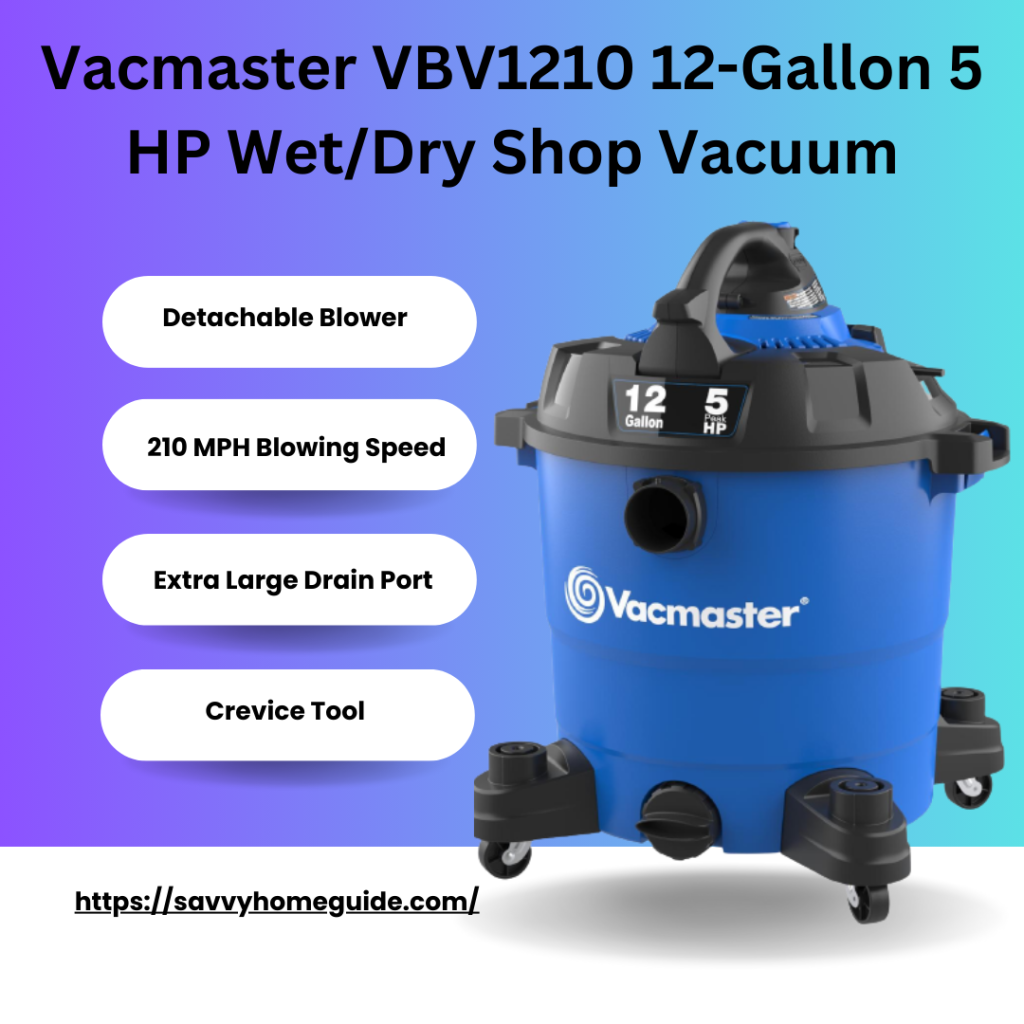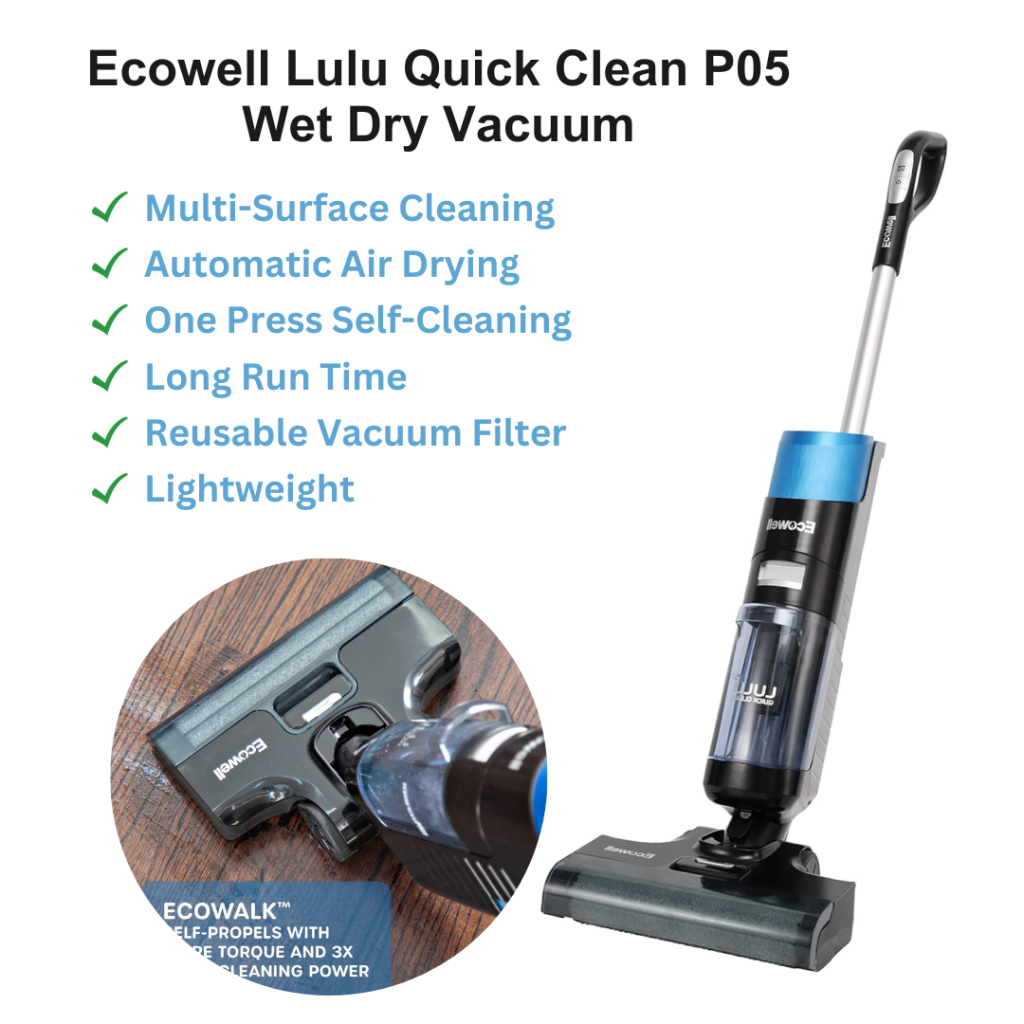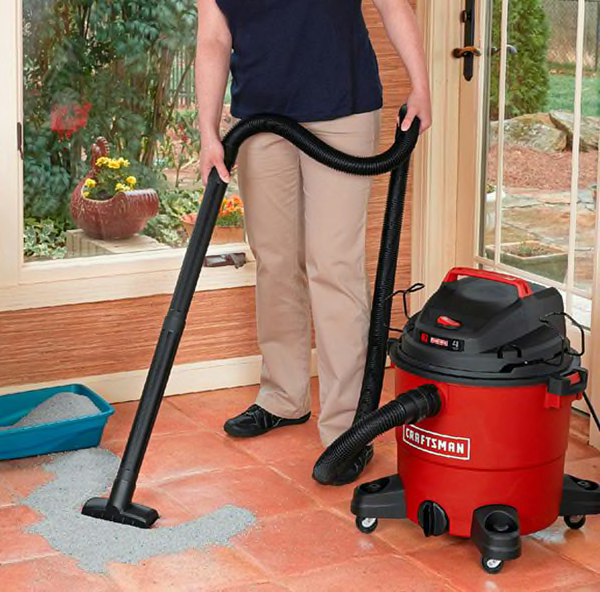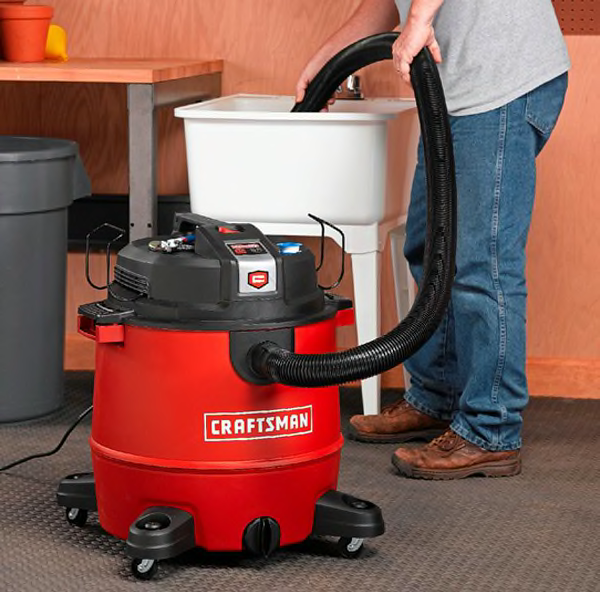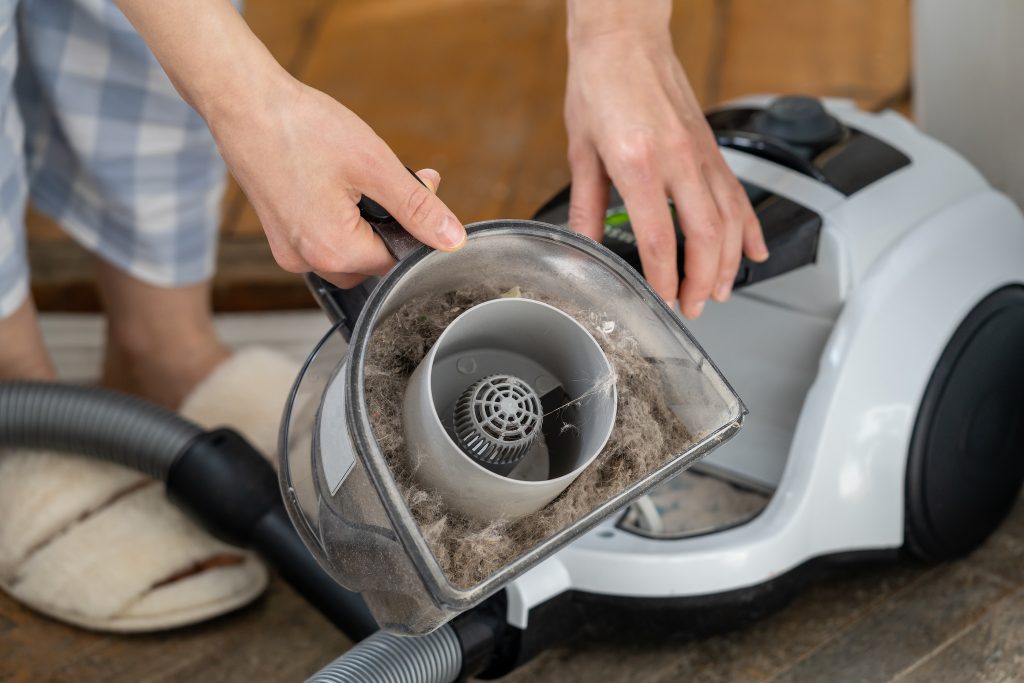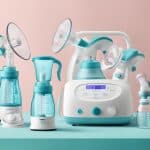A wet-dry vacuum, also known as a shop vacuum, is a type of vacuum cleaner designed to handle both wet and dry messes. It is commonly used in garages, workshops, and other areas where spills and debris occur daily. Wet-dry vacuums are typically more potent than traditional vacuums and have a larger capacity for holding waste and liquids. They often come with various attachments, such as crevice tools and brushes, to help clean multiple surfaces and materials.
The guide aims to provide information on what a wet-dry vacuum is, how it works, and its various uses. It also provides tips on how to use and maintain a wet-dry vacuum and recommendations for some of the best wet-dry vacuums on the market.
Top Wet-Dry Vacuum Models to Consider
Here are some of the top wet-dry vacuum models to consider based on expert reviews and ratings:
Best Overall – Bissell CrossWave HydroSteam Plus Wet Dry Vac
The Bissell CrossWave HydroSteam Plus Wet Dry Vac is a versatile and efficient cleaning tool that can simultaneously vacuum, wash, and steam clean. It features powerful suction and steam cleaning capabilities, and its hard floor sanitizer formula eliminates 99.9% of bacteria, making it ideal for homes with kids and pets.
The HydroSteam technology allows it to clean up to 20% better on tough, sticky messes, while the tangle-free brush roll minimizes hair wrap and prevents tangles. However, it is relatively expensive compared to other wet-dry vacuums. The Bissell CrossWave HydroSteam Plus Wet Dry Vac is a top-performing and innovative cleaning solution.
Here are some key features that were associated with this product:
- Multi-Surface Cleaning: The CrossWave HydroSteam Plus is designed to clean a wide range of surfaces, including sealed hard floors (like tile, hardwood, and laminate) and area rugs.
- Simultaneous Cleaning: One of the notable features is its ability to vacuum and steam clean simultaneously. By thoroughly cleaning and sanitizing floors in one pass, this can save time and effort.
- Steam Cleaning: It has a steam cleaning function to help remove dirt, stains, and bacteria from your floors. The adjustable steam settings allow you to customize the steam output based on your cleaning needs.
- SmartClean Fingertip Controls: Some models come with SmartClean Fingertip Controls, making it easy to switch between cleaning modes and adjust settings as needed.
- Multi-Surface Brush Roll: The brush roll is designed to effectively clean hard floors and area rugs without causing damage.
- Water Tank Capacity: The water tank capacity may vary between models, so you should check how much water the specific model can hold for steam cleaning.
- Easy-to-Clean Design: Bissell typically designs its products for easy maintenance, with removable, easily cleaned, and reused components.
- Accessories: Depending on the specific package or model, it may have additional accessories, such as brush rolls or cleaning solutions, to enhance its cleaning capabilities.
The efficiency, flexibility, and price of the Bissell CrossWave HydroSteam Plus Wet Dry Vac can vary depending on the specific model and package. To assess these aspects, it’s essential to read product reviews, compare prices from various retailers, and consider your cleaning needs and budget.
Best Shop Vacuum – Vacmaster 14-Gallon 6.5 Peak HP Steel Wet/Dry Vacuum
The Vacmaster 14-gallon 6.5 Peak HP Steel Wet/Dry Vacuum is a heavy-duty vacuum cleaner designed to handle wet and dry cleaning tasks, making it suitable for various cleaning applications. Here are some key features and considerations associated with this vacuum:
- Capacity: This vacuum has a large 14-gallon tank capacity, which allows it to hold a substantial amount of debris, liquids, and dirt before emptying. This is particularly useful for larger cleaning projects or professional use.
- Peak Horsepower (HP): The Vacmaster 14-gallon Wet/Dry Vacuum boasts a powerful 6.5 Peak HP motor. Higher HP ratings typically indicate greater suction power and the ability to handle demanding cleaning tasks effectively.
- Durable Construction: The steel construction of the vacuum is designed to be rugged and durable, capable of withstanding heavy use and rough handling. This can be especially important for commercial or industrial settings.
- Versatile Cleaning: It’s suitable for a wide range of cleaning tasks, including vacuuming dry debris like dust and dirt and handling wet messes such as spills and water extraction. The vacuum usually has various attachments and nozzles to facilitate cleaning needs.
- Hose and Cord Length: Check the hose and power cord length to ensure they are sufficient for your needs. Longer hoses and cables allow for more extended reach without frequently changing outlets.
- Filtration: The Vacmaster typically includes a filtration system to capture dust and debris. Some models may come with HEPA filters, which are effective at trapping fine particles, making it a good choice for those with allergies.
- Accessories: Depending on the model and package, it may come with various accessories such as extension wands, nozzles, and brushes to handle different surfaces and cleaning tasks.
- Price: The Vacmaster 14-gallon 6.5 Peak HP Steel Wet/Dry Vacuum can vary based on the model and included accessories. It’s important to compare prices from different retailers to find the best deal.
- Warranty: Check the manufacturer’s warranty to understand the protection and support you’ll receive with your purchase.
When considering the Vacmaster 14-gallon 6.5 Peak HP Steel Wet/Dry Vacuum, consider your specific cleaning needs, the size of the areas you’ll be cleaning, and whether you require heavy-duty performance. This vacuum is generally well-suited for workshops, construction sites, garages, and other settings where robust cleaning capabilities are needed.
Best Shop Vacuum – Vacmaster VBV1210 12-Gallon 5 HP Wet/Dry Shop Vacuum
The Vacmaster VBV1210 12-gallon 5 HP Wet/Dry Vacuum is a versatile cleaning tool for handling wet and dry cleaning tasks. Here are some key features and considerations associated with this vacuum:
- Capacity: This vacuum has a 12-gallon tank capacity, which allows it to hold a decent amount of debris, liquids, and dirt before emptying. This is suitable for a range of cleaning projects, including medium-sized ones.
- Motor Power: The Vacmaster VBV1210 has a 5 HP (horsepower) motor. While it’s not the most powerful motor available, it should provide sufficient suction power for most household and light to medium-duty cleaning tasks.
- Versatile Cleaning: Like most wet/dry vacuums, this model is suitable for various cleaning tasks. It can vacuum dry debris like dust and dirt and handle wet messes such as spills and water extraction. The vacuum usually has multiple attachments and nozzles to accommodate different cleaning needs.
- Hose and Cord Length: Check the hose and power cord length to ensure they are adequate for your needs. Longer hoses and cords allow for more extended reach without frequently changing outlets.
- Filtration: The Vacmaster VBV1210 typically includes a filtration system to capture dust and debris. Some models may come with HEPA filters, which are effective at trapping fine particles and allergens.
- Accessories: Depending on the model and package, it may come with various accessories such as extension wands, nozzles, and brushes to handle different surfaces and cleaning tasks.
- Price: The price of the Vacmaster VBV1210 can vary based on the model and included accessories. It’s important to compare prices from different retailers to find the best deal.
- Warranty: Check the manufacturer’s warranty to understand the protection and support you’ll receive with your purchase.
The Vacmaster VBV1210 12-gallon 5 HP Wet/Dry Vacuum is generally suitable for household cleaning tasks, workshops, garages, and other settings where wet and dry cleaning is required. When choosing a vacuum cleaner, it’s essential to assess your specific cleaning needs and the scale of your projects.
Best Value – Ecowell Lulu Quick Clean P05 Wet Dry Vacuum
The Ecowell Lulu Quick Clean P05 Wet Dry Vacuum is a highly-rated model known for its powerful suction and lightweight design. It features a four-peak horsepower motor and a 5-gallon tank that can handle wet and dry messes. The vacuum is also lightweight, making it easy to maneuver and transport around the home.
The Ecowell Lulu Quick Clean P05 Wet Dry Vacuum has various attachments, including a crevice tool and dust brush, for versatile cleaning. This model is a reliable and efficient cleaning tool suitable for small to medium-sized spaces. However, its smaller tank size may be better for more extensive cleaning jobs.
Best Large-Capacity – Craftsman 16-Gallon 6.5 Peak HP Wet/Dry Vacuum
The Craftsman 16-gallon 6.5 Peak HP Wet/Dry Vacuum is a versatile and powerful cleaning tool designed to handle a wide range of wet and dry cleaning tasks. Here are some key features and considerations associated with this vacuum:
- Capacity: With a 16-gallon tank capacity, this vacuum can hold a significant amount of debris, liquids, and dirt before emptying. This makes it suitable for large cleaning projects, including workshops and garage spaces.
- Motor Power: The Craftsman 16-gallon Wet/Dry Vacuum has a robust 6.5 Peak HP (horsepower) motor. This high-powered motor provides strong suction, making it capable of handling tough cleaning jobs effectively.
- Versatile Cleaning: This vacuum can handle various cleaning tasks. It is designed to vacuum dry debris like dust and dirt and handle wet messes such as spills and water extraction. The vacuum typically comes with various attachments and nozzles for different cleaning needs.
- Hose and Cord Length: Check the hose and power cord length to ensure they are suitable for your needs. Longer hoses and cables allow for extended reach without frequently changing outlets.
- Filtration: The Craftsman 16-gallon Wet/Dry Vacuum usually includes a filtration system to capture dust and debris. Some models may come with HEPA filters, which are effective at trapping fine particles and allergens.
- Accessories: Depending on the specific model and package, it may come with various accessories such as extension wands, nozzles, brushes, and a utility nozzle for different surfaces and cleaning tasks.
- Price: The Craftsman 16-gallon 6.5 Peak HP Wet/Dry Vacuum can vary based on the model and included accessories. It’s essential to compare prices from different retailers to find the best deal.
- Warranty: Check the manufacturer’s warranty to understand the protection and support you’ll receive with your purchase.
The Craftsman 16-gallon 6.5 Peak HP Wet/Dry Vacuum is a heavy-duty vacuum cleaner suitable for workshops, garages, construction sites, and other settings where robust cleaning capabilities are required. It provides ample capacity and power for handling demanding cleaning tasks.
Understanding Wet-Dry Vacuum Specifications
Understanding the specifications of a wet-dry vacuum is essential when choosing the suitable model for your needs. Here are some of the key specifications to consider:
- Tank Capacity: The tank capacity of a wet-dry vacuum refers to the amount of debris and liquid it can hold. Tank sizes can range from a few gallons to over 20 gallons, so choosing a size appropriate for the size of the space you’ll be cleaning is essential.
- Motor Power: The motor power of a wet-dry vacuum is measured in peak horsepower (HP) and refers to the strength of the vacuum’s suction. A higher HP rating generally means more powerful suction.
- Hose Diameter: A wet-dry vacuum’s hose diameter refers to the hose’s size and can affect the vacuum’s suction power. A larger hose diameter can provide more suction power but may be more challenging to maneuver.
- Filtration System: The filtration system of a wet-dry vacuum is essential for trapping dust and debris. Some models come with a HEPA filter, which can trap smaller particles and allergens.
- Weight: The weight of a wet-dry vacuum can affect its portability and ease of use. Lighter models may be easier to maneuver, while heavier models may be more durable.
Considering these specifications, you can choose a wet-dry vacuum appropriate for your specific cleaning needs.
How to Choose a Wet-Dry Vacuum Based on Your Needs
Choosing a wet-dry vacuum that meets your needs can be daunting. Here are some factors to consider when selecting a wet-dry vacuum based on your needs:
- Size of the Space: Consider the size of the space you’ll be cleaning. For small areas, a compact and portable wet-dry vacuum may be sufficient. A model with a larger tank capacity and a more powerful motor may be necessary for larger spaces.
- Type of Messes: Consider the kinds of messes you’ll be cleaning. If you’ll be dealing with primarily dry debris, a model with powerful suction may be sufficient. If you are dealing with wet messes, a model with a larger tank capacity and wet cleaning capabilities may be necessary.
- Filtration System: Consider the filtration system of the wet-dry vacuum. If you or someone in your household has allergies or asthma, a model with a HEPA filter may be necessary.
- Accessories: Consider the accessories that come with the wet-dry vacuum. Different models come with various attachments, such as crevice tools and dust brushes, which can help clean other surfaces and materials.
- Price: Consider your budget when choosing a wet-dry vacuum. Prices can vary widely depending on the features and capabilities of the model, so it’s essential to select a model that meets your needs without breaking the bank.
Considering these factors, you can choose a wet-dry vacuum appropriate for your specific cleaning needs and budget.
Factors to Consider Before Buying a Wet-Dry Vacuum
Here are some essential factors to consider before buying a wet-dry vacuum:
- Capacity: The capacity of the vacuum should be large enough to handle the size of the mess you need to clean up. A larger capacity will allow you to clean up more significant spills without needing to stop and empty the vacuum.
- Suction Power: The vacuum’s suction power is crucial as it determines how effectively it can clean up wet and dry messes. Look for a vacuum with a strong motor and high suction power.
- Filtration: A sound filtration system is essential to trap dust, dirt, and other particles. Look for a HEPA filter vacuum that can trap even the tiniest particles.
- Hose Length: The hose length is essential, especially if you need to clean hard-to-reach areas. A longer hose will allow you to reach further without moving the vacuum around.
- Accessories: Look for a vacuum with various accessories, such as crevice tools, extension wands, and brush attachments, to help you clean multiple surfaces and messes.
- Noise Level: Wet-dry vacuums can be loud, so consider the noise level of the void if you plan to use it in a residential area. Look for a vacuum with a lower decibel rating if noise concerns you.
- Portability: Consider the weight and size of the vacuum if you plan to move it around frequently. Look for a vacuum with wheels and a handle for easy portability..
How to Maintain and Care for Your Wet-Dry Vacuum
Here are some tips on how to maintain and care for your wet-dry vacuum:
- Empty the Tank: Always empty the tank after every use to prevent bacteria and mold buildup. This will also prevent the vacuum from emitting unpleasant odors.
- Clean the Filter: The filter should be cleaned regularly to maintain the vacuum’s suction power. Follow the manufacturer’s instructions on how to clean the filter, which may involve washing it with water or tapping it to remove debris.
- Check the Hose: Check the hose for any blockages or damage. Clean the hose regularly and replace it if it becomes damaged.
- Store Properly: Store the vacuum in a dry and cool place to prevent moisture and mold buildup. Make sure to wrap the cord properly to prevent damage.
- Replace Parts: Replace any worn-out or damaged parts, such as the filter or hose, to ensure the vacuum functions appropriately.
- Use Properly: Use the vacuum properly and avoid overfilling the tank or using it on surfaces unsuitable for wet-dry vacuums.
- Lubricate Moving Parts: Lubricate the moving parts of the vacuum, such as the wheels and bearings, to ensure they function smoothly.
By following these tips, you can extend the lifespan of your wet-dry vacuum and ensure it functions properly for years to come.
Frequently Asked Questions about Wet-Dry Vacuums
Here are some frequently asked questions about wet-dry vacuums:
- What is a wet-dry vacuum?
A wet-dry vacuum is a type of vacuum cleaner used to clean up wet and dry messes. It is designed to handle liquids and solid debris, making it a versatile tool for cleaning up spills, dirt, dust, and debris.
- What are some common uses for a wet-dry vacuum?
A wet-dry vacuum can be used for various tasks, such as cleaning up spills, removing water from flooded areas, cleaning carpets, upholstery, and floors, and removing debris from construction sites.
- Can I use a wet-dry vacuum to clean up hazardous materials?
Wet-dry vacuums are not designed to handle hazardous materials such as asbestos, lead, or mold. These materials require specialized equipment and trained professionals to take them safely.
- How do I choose the right wet-dry vacuum for my needs?
When choosing a wet-dry vacuum, consider the capacity, suction power, filtration, hose length, accessories, noise level, and portability. Choose a vacuum that meets your specific needs and budget.
- How do I maintain and care for my wet-dry vacuum?
Empty the tank after each use, clean the filter regularly, check the hose for blockages or damage, store the vacuum properly, replace worn-out or damaged parts, use the vacuum properly, and lubricate moving parts to maintain your wet-dry vacuum.
Conclusion
Are you tired of struggling to clean up spills and messes around your home or workplace? Do you want to use multiple cleaning tools to tackle different messes? If so, it’s time to invest in a wet-dry vacuum!
A wet-dry vacuum is a versatile and powerful cleaning tool that can handle wet and dry messes. Whether you need to clean up a spilled drink, remove water from a flooded area, or clean carpets and floors, a wet-dry vacuum is perfect.
With its strong suction power, a wet-dry vacuum can quickly and easily remove debris, dust, and dirt from any surface. Its filtration system ensures that even the smallest particles are trapped, making it ideal for those with allergies or respiratory issues.
Moreover, wet-dry vacuums have various accessories, such as crevice tools, extension wands, and brush attachments, to help clean multiple surfaces and messes. Plus, they are easy to maintain and care for, ensuring they will last for years.
So, if you want to save time and effort while achieving a cleaner and healthier environment, invest in a wet-dry vacuum today!

